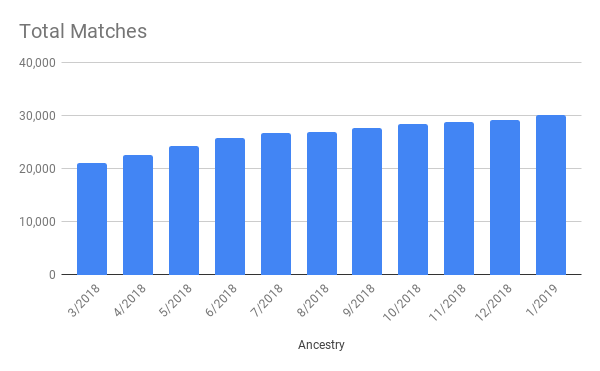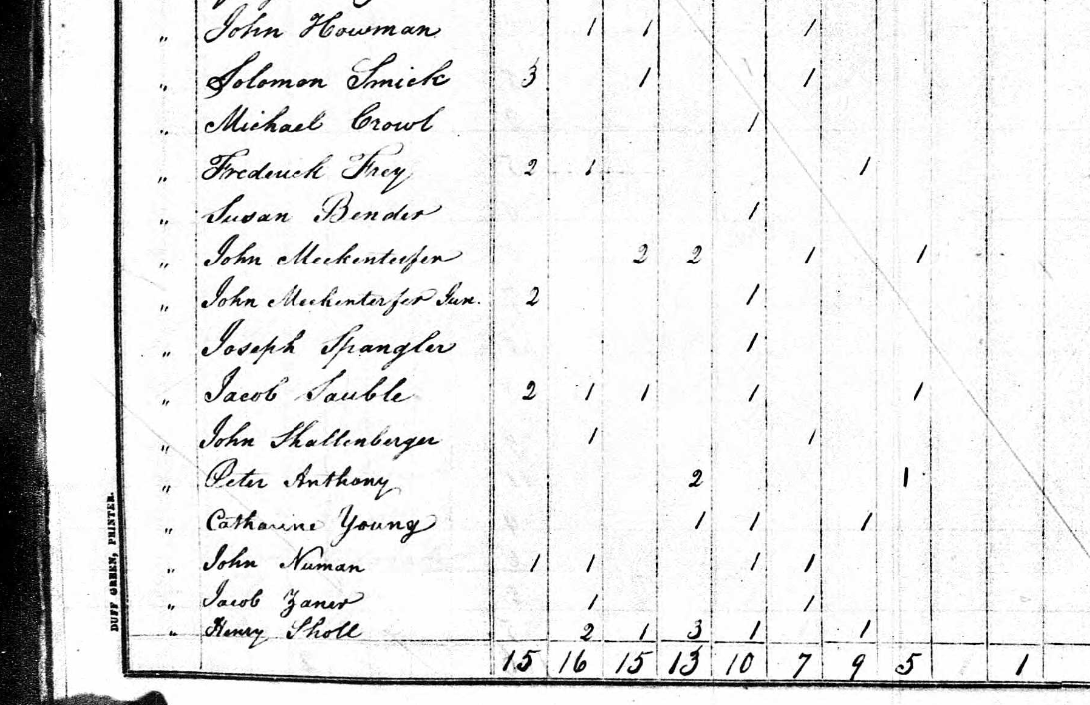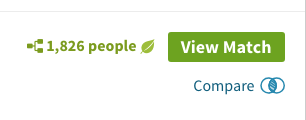Margaretha (Schneider) Reppert (1764-1831)
So, I had a new AncestryDNA match appear for my Mom recently. I was doing a search for matches with Schneiders in their tree born in Pennsylvania otherwise I probably wouldn’t have found them.
It’s a fairly small segment—only 15 cMs on one segment. I wasn’t overly excited until I saw our Shared Match. There was only one, but it happened to be the cousin I identified as sharing both Schneider and Nuss segments with my Mom. He’s been pivotal to identifying my Schneider DNA relatives.
This new match traces their ancestry back to Jacob Reppert and Margaret Schneider of Berks County, Pennsylvania. According to their family tree, Margaret was born 2 June 1764, no parents listed, and married Jacob Reppert in Oley Township, Berks County on 10 January 1786.1
There were only two other trees listing Margaret—one included parents William and Susanna, the other no parents. William and Susanna did indeed have a daughter Margaret, but church records attached to that tree show she was born 23 December 1760,2 not the 2 June 1764 found on Margaret’s profile. The alternate tree that showed no parents also had a different birth date: 2 July 1764.

That birth date gave me an ah-hah moment. Elias Schneider and Anna Maria Nuss had a daughter Anna Margaretha born 2 July 1764 and baptized at Old Goshenhoppen Church (no date given).3 Since there were no sources provided for either the June or July birth dates, it could be either. The DNA match, however, makes me suspect the July date may be correct.
When I identified my 5G grandfather Jacob Schneider as a descendant of Conrad and Catharina (Betz) Schneider, I stated that their son Elias might be Jacob’s father. I also found the he was proving to be rather elusive. So, he’s probably the one child of Conrad and Catharina for whom I’ve been hoping the most to locate genetic descendants.
Here are five reasons that I believe Margaret is the daughter of Elias and Anna Maria (Nuss) Schneider. None of them are sufficient alone, but together they start to build a circumstantial case for the relationship.
1. Name
Elias Schnieder and Anna Maria Nuss had a daughter Anna Margaretha born 2 July 1764 and baptized at Old Goshenhoppen Lutheran Church.4 She was sponsored by George Gaugler and Anna Margaretha Nuss (Maria’s sister).
2. Date
All three Ancestry Family Trees that include Anna Margaretha (Schneider) Reppert agree that she was born in 1764.5 Two of them claim she was born on 2 June 1764 and one on 2 July 1764. Since none of them provide a source to support the claim—except other trees—I can only accept the year. But they are all really close to or exactly the 2 July birth date of Elias’ daughter.
3. Location
The last known potential location I have for Elias Schneider is Oley Township, Berks County. An Anna Maria Schneider was granted Letters of Administration for the late Elias Schneider of Oley Township, Berks County on 31 March 1779.6 Henry Kersten of Oley Township and Adam Hamsher of Rucombmanor Township were bondsmen for the administration bond.7 The estate inventory was submitted 10 April 1779, appraised by Daniel Guldin and Elias Waggoner.8
Both the “Widow Snyder” and Conrad Snyder appear in tax records for Oley Township in the following years—the widow through 1782 and Conrad through 1787.
The first known location I’ve found for Margaretha (Schneider) Reppert is also Oley Township. She married Jacob Repport at Salem Reformed [now UCC] Church in Oley Township on 10 January 1786.9 Margaretha and Jacob, like Conrad and Margaretha, also had children baptized at Salem Reformed Church in Oley. Jacob is found in township tax records from 1786 through 1799.10
4. Family Ties
Margaret (Schneider) Reppert’s daughter Elisabetha was sponsored on 11 August 1793 at Oley (Salem) Reformed Church by Catharina Schneider.11 If Margaretha was Elias’s daughter, then her daughter was sponsored by her younger sister.
Additionally, Daniel Schneider of Ruscombmanor was listed as a bondsman on the administration bond for Jacob Reppert on 14 June 1837.12 Usually family members serve these roles because they have some influence over the people involved and can help to ensure that they fulfill their responsibilities. With the exception of George Schlotman, I’ve identified all the others listed on the bond as being members of Jacob’s family, sons and sons-in-law. Daniel Schneider was likely a family member from Margaretha’s side of the family.
Conrad Schneider, quite likely Margaretha’s brother, had a son named Daniel born in 1789. He would have been of age to be a match to the Daniel Schneider found in the 1840 United States Census enumeration for Ruscombmanor Township.13
Furthermore, there is an association between Nuss family members and Berks County. Anna Maria’s sister Elisabetha (Nuss) Gottschall Wagner resided in Reading and Alsace Township in Berks County during her lifetime. Her brother Conrad Nuss died in Hereford Township. And her sister Anna Margaretha (Nuss) Leinbach lived in Reading.
5. DNA
My mother is a DNA match to two descendants of Margaretha (Scheider) Reppert. They are from the same family, so I’d like to see more matches before drawing conclusions. But a review of their family tree from their shared ancestor back did not reveal a closer potential match than Margaretha. Furthermore, the amount of DNA they share with my Mom is within the probability for the presumed relationship, according to the Shared CM Project, given Elias Schneider and Anna Maria Nuss as our common ancestors.
And finally, the AncestryDNA matches these Reppert descendants share with Mom are all members of the Schneider cluster I’ve identified, including the cousin who, like my mom, descends from Jacob Schneider and Catharina Nuss.
Conclusions
I’m really excited to find this match. While I don’t feel that current evidence proves the relationship, I do feel that it’s more probable than any of the alternatives I can come up with.
Now I’ll just eagerly await the next Snyder/Schneider DNA match and the clues it will provide.
























